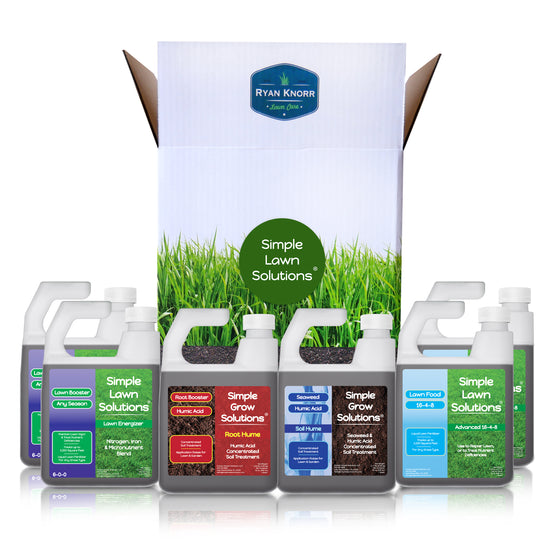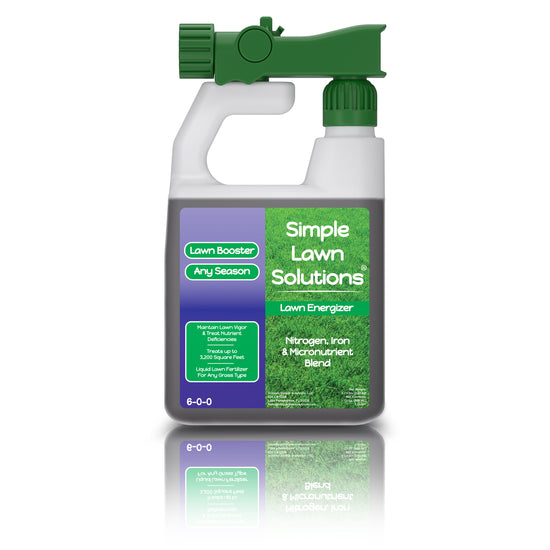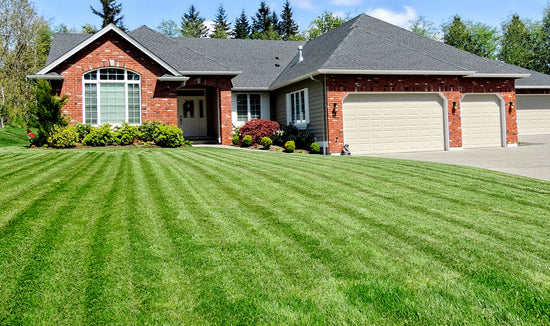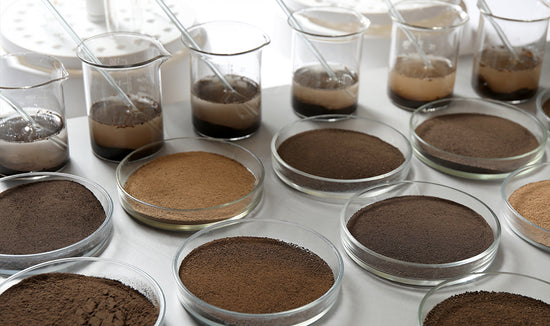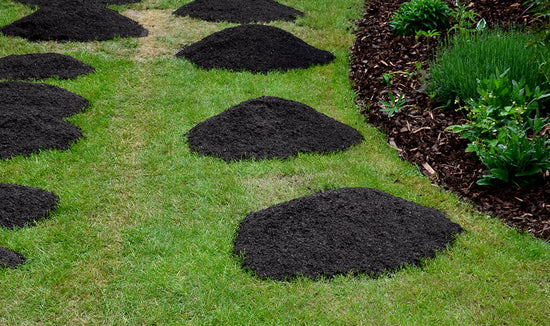Having a beautiful, lush lawn is part of nearly every dream house. When it comes to making that lawn a reality, however, many people seem to fall short. Finding the right lawn care solutions for your home is vital, but it can seem overwhelming. Thankfully, keeping your outdoor space fresh and vibrant doesn’t have to be as hard as it looks. In this blog, we’ll break down what to look for in lawn care for your home, different types of liquid lawn products, and how to keep your lawn the envy of all of your neighbors.
Location Matters
One of the most often overlooked issues when selecting liquid lawn care products is to base your choice on your region. Where you live determines what kind of grasses and plants will grow the easiest in your yard. There are two primary varieties of grasses to choose from depending on where you reside: cool-season grasses and warm-season grasses. Cool-season grasses grow best in the top half of the country — from the top half of California and above to Pennsylvania and up to Maine. Warm-season grasses grow best from in the southeast corner of Arizona across to South Carolina and below.
If you’re a geography nerd, you probably noticed that we skipped a fairly large chunk of the country. Don’t worry. We didn’t forget you! This area, stretching from the bottom half of California across the country to Virginia and North Carolina, is called the transition zone. Unfortunately cool- and warm-season grasses both grow equally poorly. In the transition zone, grass selection is about choosing the lesser of two evils.
It’s essential to understand your climate zone to help determine what lawn care products are best for your yard. Spending thousands of dollars to install the wrong species of grass for your area will only lead to disappointment and frustration down the road.
Types of Grasses

After you’ve determined the climate you live in, it’s time to explore the different types of grasses that grow best in each. If you live in a cool-season environment, there are four dominant types of grass to choose from:
- Bluegrass: Bluegrass is a type of grass that many people consider to be the best for making your lawn the envy of the neighborhood. Although there is a variety that will grow almost anywhere in the United States, this grass does require a decent amount of lawn care maintenance and watering. Also, it prefers nice, bright sun and has a lower tolerance for shade than other types of grass.
- Perennial ryegrass: Another variety of grass that is most often found in cool-season climates is perennial ryegrass. Perennial ryegrass is known for its fast germination and seedling growth. It is tolerant of cold, heat, drought, and light and shade. In the right climates and with careful lawn care oversight, this grass species can be grown successfully.
- Tall fescue: If you’re looking for a resilient and durable lawn care solution, tall fescue is a great choice. When planted in its preferred growing zones, this grass has a higher heat, drought, and shade tolerance than other grasses. Also, it has great disease resistance. The only downside to tall fescue is that it is harder to repair sections that become damaged and lacks good cold tolerance.
- Fine fescue: If you live in a cooler climate and have a yard with more shade than sun, fine fescue is the grass for you. This grass requires less lawn care maintenance than other varieties and has low watering and liquid lawn fertilizer needs. Fine fescue comes in five major species: hard fescue, sheep fescue, Chewing's fescue, creeping red fescue, and slender creeping red fescue. We recommend purchasing a seed mix blend of all five to create a more durable and resilient yard. While fine fescue does great in more difficult soil conditions, including dirt filled with rocks, sand, or clay, it doesn’t stand up as well to high-traffic areas. If you hold a lot of backyard cookouts, this may not be the best type of grass for you.
If you live in a warmer climate, such as Florida or Texas, we suggest picking one of the top five warm-season kinds of grass available:
- Bahia: In environments that experience extensive droughts and heat, bahiagrass is durable, low-growing, and requires very little lawn care maintenance. Bahia prefers full sun and grows best in the Deep South along the Gulf Coast. If you happen to live in a location where bahiagrass thrives and you want a low-maintenance lawn option, this grass may be an excellent choice for you.
- Common Bermudagrass: Common bermuda is the most popular turf grass for most of the temperate and tropical parts of the world. For lawn care projects that require erosion control, common bermudagrass is an excellent option. In addition to being adaptable for a wide variety of soil types, common bermuda does best in well-drained areas, although it can also survive small bouts of flooding, if necessary. If you are on a budget, planting common bermudagrass from seed is the most cost-effective way to grow your lawn.
- Hybrid Bermuda: Hybrid bermudagrass has been bred to withstand a wide variety of growing conditions and is typically used in more high-traffic areas. In addition to lawns, this variety of grass is commonly used for golf course greens and fairways. One drawback of hybrid bermuda, as opposed to the standard variation, is that it cannot be grown from seed. Laying sod or sprigs is the only way to establish hybrid bermudagrass, which is usually more expensive than seed. Last but not least, hybrid bermudagrass requires more frequent liquid lawn care and does not do well in shade or cold.
- Centipedegrass: If your yard is frequently exposed to high temperatures, centipedegrass is a great option. Perfect for people in the Southeast, the specific climate and soil requirements of centipedegrass are balanced out by its simple lawn care requirements. Centipedegrass is tolerant to moderate amounts of shade but is sensitive to alkaline soil. If you live in an area where the soil has higher pH levels, keeping centipedegrass healthy and thriving will require more frequent treatments of iron supplements and pH-lowering liquid lawn sprays. Conduct a stress-free soil sample test to see if centipedegrass is right for your lawn.
- Zoysiagrass: Zoysiagrass rounds out the top five warm-season grasses. The success or failure of zoysiagrass in your yard depends on three factors: your climate, your lawn care goals, and the amount of foot traffic your yard will receive. Although zoysia is a warm-season grass, its improved cold tolerance, and low water and lawn care maintenance requirements make it suitable for both Southern and transitional climates. Zoysiagrass prefers ample amounts of sun, but it will tolerate more shade than other warm-season grasses. It’s also heat- and drought-resistant, making it perfect for hot, dry climates. If you are someone who plans to get a lot of use out of their yard, zoysiagrass is known to be incredibly dense, which helps it tolerate high amounts of traffic without damage. If it does get damaged, its slow growth can take a while to repair. If zoysia’s strengths align with your yard’s needs, this may be the grass for you!
Lawn Care Products
Now that we’ve covered the most popular types of grasses to choose from, let’s take a look at the different liquid lawn products that will help keep your yard looking picture-perfect year-round.
There are three categories of lawn care products you should know: lawn food, lawn boosters, and soil treatments. As we mentioned earlier, various types of grass require help in different areas. It’s essential to get to know your yard before selecting the lawn care products you need to avoid wasting time and money on the wrong item.
Hi. Nice to Meet You!

It’s time to get to know your grass. Unsure where to start? Here are a few of our favorite tips and tricks to help you find the best liquid lawn care products for your grass:
- Test your soil: If your grass grows best in low pH soil, but you don’t take the time to test the acidity of your yard, you could be setting yourself up to fail. If you’re unsure where to find the best pH testing kit, either run a quick Google search for a soil testing lab or reach out to your local county agricultural extension office for advice. Make sure to take multiple soil samples from different areas, especially those that may be exhibiting signs of discoloration or slow growth.
- Address problems at the beginning: If you want a beautiful lawn, don’t take chances by assuming problem areas will fix themselves. Also, we don’t recommend ignoring the results of your soil test or forgoing it altogether. If you’re going to invest in your lawn care, doing it the right way is going to produce much better results.
- Don’t let your grass go hungry: We all get a bit cranky when we’re hungry. Your lawn is no different. The concentration of nitrogen and other chemicals your yard receives can determine how lush, green, and vibrant your grass appears. Different liquid lawn products can address deficiencies in your lawn’s nutrients by giving it the food it needs to grow strong and healthy. Your yard needs a lawn care product that fits its unique needs. Liquid lawn sprays come in a variety of chemical compositions to address things such as low nitrogen and potassium levels, as well as to provide overall nutritional support for maximum growth. Once you figure out the best concentration of each supplement for your grass, decide on a lawn care feeding schedule, and stick to it.
- Prevent weeds before they start: One weed can quickly become an overwhelming battle for control of your yard. Thankfully, there are tons of lawn products to keep weeds from taking over. Even if you use frequent weed treatments, don’t overlook the importance of a glance over each section of your yard once or twice a week. Keeping tabs on any unwelcome visitors can make it easier to treat problems if they do arise. Check out this list of common garden weeds from The Old Farmer’s Almanac to get a better idea of what challenges you may face.
- Find the best haircut for your yard: Not every yard wants a simple buzz cut. Your lawn care mowing routine should be determined by the type of grass and the current weather. Bermudagrass, for example, thrives when cut to a shorter height than other grasses, while exposure to a higher heat index necessitates a higher grass height. Always remember to mow your lawn based on its length, not your schedule. Just because it's Saturday doesn’t automatically mean your yard needs to be cut — regardless of what your significant other says!
- Watering 101: Did you know that it’s better to saturate your yard a few times a week more infrequently than it is to water for a shorter period every day? The roots of your grass grow best when exposed to saturating, infrequent watering. Instead of spending 10 minutes of your daily lawn care routine on watering, give your yard a good long soak, between 20 and 60 minutes, two to four times each week. It’s also important to keep an eye on the weather as it relates to your watering schedule. If it sprinkles for 20 minutes, the chances are that’s not enough water to thoroughly saturate your lawn, while hot, dry spells may mean additional watering is needed.
-
Bonus points: Selecting a liquid lawn spray that provides an added boost of nutrients, such as 16-4-8 Complete Balanced NPK, can make a world of difference in your curb appeal.
Fill Your Cart
No matter where you live, finding the best lawn products has never been easier, thanks to Simple Lawn Solutions. Stocked with a variety of liquid lawn food products, soil treatments, and lawn boosters, you’ll be sure to find everything you need to make your yard the best-looking one on the block. Visit our website to learn more!





